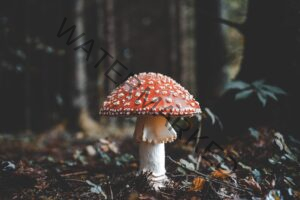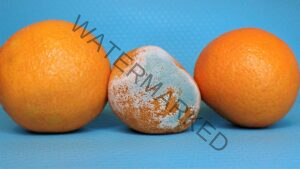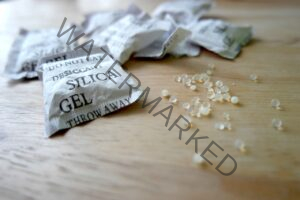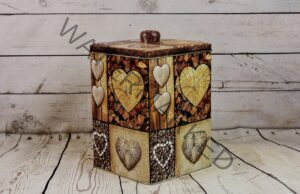
Do Shrooms Expire? An In-depth Look into the Shelf Life of Psychedelic Mushrooms
4 August 2023
Psychedelic mushrooms, popularly known as shrooms, have long been recognised for their mind-altering effects. However, just like any other natural substance, one might wonder: do shrooms expire? If you’re a psychonaut eager to discover the answer, this blog post is for you. We will dive into the details of shroom preservation, identifying signs of spoilage, and providing proper storage techniques to maximise their shelf life.
Do Shrooms Expire? Delving into the Basics

Freshly harvested shrooms naturally contain a significant amount of moisture, which makes them prone to spoilage if not consumed or preserved promptly. On the other hand, when these mushrooms are dried, the dehydration process extends their shelf life, slowing down the spoilage rate significantly.
Storage conditions also play a crucial role in determining the longevity of your shrooms. For instance, environments with high humidity and temperature can accelerate bacterial and mould growth, hastening the shrooms’ expiration process. Conversely, storing shrooms in cool, dry, and dark conditions can delay spoilage, thereby prolonging their lifespan.
Understanding these fundamental factors and appropriately manipulating them is pivotal in extending the life of your psychedelic mushrooms. By exercising adequate control over these conditions, you can significantly slow down the spoiling process and ensure your shrooms remain potent for your future psychedelic explorations.
Fresh Shrooms Vs. Dried Shrooms: Comparing Shelf Life

However, dried psychedelic mushrooms, like many other substances, can lose their potency over time. The primary psychoactive compounds in shrooms, psilocybin and psilocin, can degrade if exposed to heat, light, and oxygen for prolonged periods . That’s why proper storage is crucial.
This being said, when properly stored – in a cool, dark, and airtight environment – dried shrooms can maintain their potency for years. This involves keeping them away from sunlight, in an airtight container, and at a consistent temperature. Some users also suggest using desiccants or oxygen absorbers to ensure the storage environment remains dry and oxygen-free, which can help in preserving the potency.
It’s important to note that while the potency may decrease over time, the shrooms won’t necessarily “expire” in the same way food does. They may not produce the desired psychedelic effects if their potency decreases significantly, but they typically won’t become harmful or dangerous to consume unless contaminated with mould or bacteria.
Spotting Spoiled Shrooms: Mould is Your Enemy

Detecting mould on psychedelic mushrooms or ‘shrooms’ is a critical step in ensuring their safety for consumption. Ingesting mouldy shrooms can lead to health complications, including nausea, vomiting, and allergic reactions. Here are some ways to identify mould on your shrooms:
Visual Inspection:
Mould typically appears as a fuzzy, cotton-like substance that can vary in colour – it might be white, green, yellow, black, or even blue. Note, however, that shrooms naturally bruise a bluish colour due to the oxidation of psilocybin, which should not be mistaken for mould.
Smell:
Healthy shrooms have an earthy smell. Mouldy shrooms, on the other hand, often give off an unpleasant, musty, or stale odour. If your shrooms smell strange, it’s a good idea to inspect them closely for any visible signs of mould.
Texture:
If your shrooms feel slimy or unusually soft, they may be mouldy. Healthy dry shrooms should be ‘cracker dry’, snapping cleanly when bent, whereas fresh ones should have a firm, not slimy, texture.
If you notice any of these signs of mould on your shrooms, it’s safer to discard them. When in doubt, it’s always better to prioritise your health and safety above all else.
Handling Shrooms: The Importance of Hygiene
Since shrooms are prone to microbial contamination, you should always handle them with clean, dry hands or gloves. Additionally, store them in sterilised containers to reduce the risk of introducing harmful microbes that might cause spoilage.
 Storing Fresh Shrooms: The Short-term Approach
Storing Fresh Shrooms: The Short-term Approach
If you’re planning to use your shrooms within a few days of harvesting, you can store them in the refrigerator. However, keep them away from high moisture areas in the fridge, as excess moisture can promote bacterial growth and spoilage.
Drying Shrooms: A Longer-lasting Solution
Drying psychedelic mushrooms effectively is crucial for their preservation and longevity. The process involves two main steps: pre-drying (or air drying) and desiccating. Here’s how to go about it:
Pre-drying or Air Drying:

– Spread your shrooms out on a wire rack or any clean, flat surface, making sure they’re not touching each other to allow for ample air circulation.
– Place a fan nearby to blow air over them. This will speed up the evaporation process.
– This process may take about 24 to 48 hours, depending on the size of your shrooms and the local humidity levels. The shrooms should feel dry to the touch, but not yet cracker-dry.
Desiccating:

– Place your pre-dried shrooms in a container with a desiccant, such as silica gel or anhydrous calcium chloride, which can be found at most hardware or craft stores. These substances will absorb any remaining moisture, ensuring your shrooms get thoroughly dry.
– Make sure the shrooms are not directly touching the desiccant. You can use a mesh or wire rack inside the container to separate them.
– Leave your shrooms in this setup for a few days until they become ‘cracker-dry’. You’ll know they’re fully dry when they snap cleanly when bent.
Remember to store your dried shrooms in a cool, dark, airtight container for maximum shelf life and potency. Oxygen absorbers can also be helpful to keep the storage environment oxygen-free.
 Proper Storage of Dried Shrooms: Essential Do’s and Don’ts
Proper Storage of Dried Shrooms: Essential Do’s and Don’ts
When it comes to storing dried shrooms, there are certain key guidelines that can help maintain their longevity and potency (Stamets, 2011). A crucial first step involves housing your shrooms in an airtight container. This barrier prevents the entry of oxygen and excess moisture, both of which can expedite the degradation process of psilocybin, the primary psychoactive compound in shrooms.
Select a cool and dark spot for storage. Warm or brightly lit locations can stimulate the breakdown of psilocybin and potentially promote the growth of harmful bacteria or mould. The ideal storage place should have a stable temperature, as fluctuations can cause condensation within the container, introducing unwanted moisture.
Equally, aim for a location with consistent humidity levels. Variations in moisture levels can affect the overall quality of the shrooms and might foster an environment conducive to bacterial or fungal growth. Incorporating oxygen absorbers into the container can be beneficial, as they help maintain an oxygen-free environment, further preserving your shrooms’ potency and enhancing their shelf life.
Enhancing Shroom Storage: Vacuum Sealing and Freezing
For individuals looking to extend the shelf life of their dried shrooms even further, vacuum-sealing followed by freezing presents an effective solution. Vacuum sealing eradicates the majority of the oxygen within the packaging and provides a robust barrier against external moisture.
This technique drastically reduces the potential for bacterial or fungal growth, thus enhancing the preservation of your shrooms.
Once vacuum-sealed, storing your shrooms in the freezer can further extend their lifespan. However, it’s essential to handle these frozen packages with care upon removal from the freezer. Allow the package to reach room temperature before opening it.
This step is critical in preventing condensation from forming on the shrooms when exposed to warmer air, as this could introduce unwanted moisture, compromising the quality and safety of your shrooms.
My Experience Drying Shrooms: The Lifespan Depends on You
So, do shrooms expire? Yes, they certainly do. However, with careful attention to hygiene, proper drying, and storage practices, you can ensure that your shrooms last as long as possible without losing their potency. Ultimately, the lifespan of your shrooms depends largely on the care you take in preserving them.
How I Dried My Shrooms
After a successful harvest of my home-grown psychedelic mushrooms, I faced the challenge of preserving them for future use. I knew that drying them properly would be crucial to maintaining their potency and preventing spoilage.
First, I set them out on a clean, flat surface, a wire rack to be exact, ensuring none were touching each other to facilitate better airflow. I directed a fan towards them, careful not to have it too close, to prevent them from being blown away.
Over the next 48 hours, I saw the shrooms lose their initial moisture, becoming shrivelled and noticeably drier to the touch. However, they were not yet ‘cracker dry’, which was the consistency I was aiming for. This marked the end of the pre-drying or air-drying stage.
Next, I moved onto desiccating them. I used silica gel as my desiccant, easily procured from a local craft store. I laid the partially dried shrooms in a container, making sure they were not touching the silica gel. For this, I used a wire rack inside the container to create a barrier between the shrooms and desiccant.
Over the next couple of days, the silica gel absorbed the remaining moisture from the shrooms, turning them truly ‘cracker dry’. I tested their dryness by snapping a small cap – it broke cleanly, a good sign that the drying process had been successful.
Finally, I stored them in an airtight container with an oxygen absorber and placed them in a cool, dark location. It’s been months since that process, and upon recent inspection, the shrooms have retained their potency, showing no signs of spoilage or mould. Overall, the drying and storing process was quite simple but essential for preservation.
As you explore the fascinating world of psychedelic mushrooms, remember that responsible use and safety should always be your top priority. If you are interested in a psilocybin experience in a safe and supportive environment check out our availability here. Happy tripping!




 Storing Fresh Shrooms: The Short-term Approach
Storing Fresh Shrooms: The Short-term Approach Proper Storage of Dried Shrooms: Essential Do’s and Don’ts
Proper Storage of Dried Shrooms: Essential Do’s and Don’ts